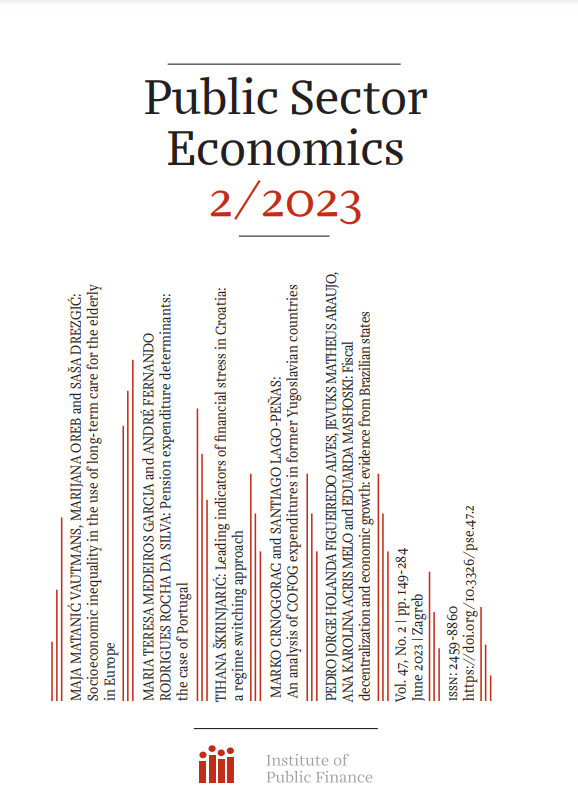Leading indicators of financial stress in Croatia: a regime switching approach
DOI:
https://doi.org/10.3326/pse.47.2.3Keywords:
financial stress, macro-prudential policy, Regime-switching models, CroatiaAbstract
This research focuses on the prediction of the probability of (re)entering high financial stress (via a large set of cyclical risk accumulation indicators). The focus is placed on a specific single-country analysis to obtain answers to questions about which indicators are best in explaining the future probability of (re)entering a high-stress regime. This allows the policymaker to get a better focus on the best-performing variables. It is challenging to monitor a whole set of indicators of cyclical risk build-up; the results could bring into focus a smaller group of the essential variables. The contribution of this paper is in finding a set of indicators that help in forecasting financial stress, in terms of switching from one regime to another. The regime-switching models’ results indicate that some credit specifications, house price dynamics, and debt burden could be best monitored for the case of Croatian data.
Downloads
Published
How to Cite
Issue
Section
License
Copyright (c) 2023 Tihana Škrinjarić

This work is licensed under a Creative Commons Attribution-NonCommercial 4.0 International License.









